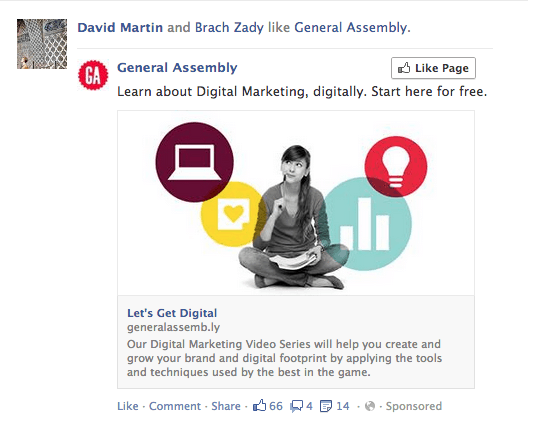Brands
Facebook, WhatsApp, and Zuck’s Plan to Control Content
There’s been a common refrain in the tech and media worlds these past few months: What the Zuck is going on with Facebook?
It all started in late fall, when everyone from Business Insider to BuzzFeed to HuffPo saw their Facebook referral traffic double or triple overnight. It was all in the name of surfacing more high-quality content that users craved, Facebook claimed.
Simultaneously, Facebook launched Paper, a standalone “social newspaper” app that allows deep, immersive content consumption. Then, in February, Facebook bought WhatsApp for a record $19 billion as content engagement through chat apps is on the rise.
According to the company, WhatsApp processes 500 million images each day, compared to 350 million on Facebook and 55 million on Instagram. Suddenly, Facebook owns an almost trillion-image empire between the three apps at a time when visual content is dominating the web — particularly among young people.
So what does it all mean?
I think Facebook wants to govern content distribution and all the paid content distribution dollars that go with it. That doesn’t just mean articles, but increasingly, visual content as well.
Everyone knows that Facebook is the biggest referrer of social traffic, but a lot of people don’t realize how big the gap is between Facebook and competing platforms. As shown in the graph below, Facebook absolutely crushes the competition — especially Twitter, whose reputation for content distribution is perhaps a bit undeserved.

Facebook’s only real challenge to social supremacy at the moment is Pinterest. If the future of social media is pinboards, Facebook might be in trouble. But Zuckerberg and Co. are making a pretty safe bet that the future is some combination of the world’s premiere photo-sharing app (Instagram), the world’s largest messaging app (WhatsApp), and itself, Facebook, which is looking more and more like social content’s richest king.
Since Facebook has the best product for distributing content, it’s fairly obvious it will eventually introduce similar products on their other owned apps. Content distribution is quickly becoming a very big business as publishers like BuzzFeed discover effectively targeted native ads on social media platforms can set set off a chain reaction of social traffic. These ads combine two of the biggest spending trends in marketing: Programmatic, which is expected to reach $4.66 billion this year, according to eMarketer, and native, which is expected to reach $2.85 billion this year.
It goes to reason that publishers will spend money on native ads on the platform that drives the most traffic. Facebook is winning that war, and it’s already started introducing native ads on Instagram. Juicing its algorithm to favor articles and creating an ecosystem of content-consumption apps suggests Facebook is looking to obliterate the competition.
Facebook’s News Feed Retargeting now allows publishers to prominently promote native content right in users’ feeds. Better yet, you can target these ads to users based on their likes, interests, and browsing activity. These native ads prominently display a piece of content and can be liked, shared and commented on just like every other Facebook post, allowing the post to spread organically. If you target the right audience with the right content, a $10 ad spend can yield thousands of pageviews.
Whether publishers are looking for an editorial boost or distributing content on behalf of brands, Facebook News Feed ads offer a simple but effective way to reach just about any target audience.


Now that Mark Zuckerberg’s master plan is on the table, expect Facebook to develop similar value propositions for the ads on its other platforms in the future. To channel my inner-T.O.: Get your popcorn ready, ‘cause Zuck’s about to put on a show.
Want your business to tell great stories like this one? Contently gives brands the tools and talent to tell stories that people love. Learn more.
Image by GoogleGet better at your job right now.
Read our monthly newsletter to master content marketing. It’s made for marketers, creators, and everyone in between.




